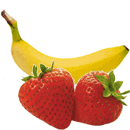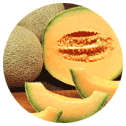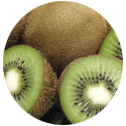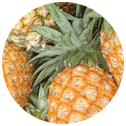 Full List of Fruits
Full List of Fruits  Southern Crabapple
Southern CrabappleSouthern Crabapple
![]() Introduction of Southern Crabapple
Introduction of Southern Crabapple
Scientific name - Malus angustifolia
The Southern crabapple comes under the crabapple category originating from the Southeastern United States, the fruits are found have an excellent aroma and are smaller size wise have a shape of a pear, Southern crabapple have astringent and acidic properties not tasty if consumed raw but aids in the preparation of jellies, jams and also food preserves, the trees are also used for decorative purpose.
![]() Nutritional Value of Southern Crabapple
Nutritional Value of Southern Crabapple
| Calories | 112.9 |
| Calories from fat | 0% |
| Total fat | 0.1g |
| Cholesterol | 0.0mg |
| Sodium | 2.6mg |
| Potassium | 101.4mg |
| Carbohydrates | 29.1g |
| Fiber | 0.8g |
| Sugar | 16.7g |
| Net carbs | 28.3g |
| Protein | 0.1g |
The Southern Crabapple has a variety of uses. The fruits can be eaten fresh, cooked into jellies and jams, or made into cider. The flowers can be used to make a fragrant tea. The wood is strong and durable, and is often used for furniture, cabinetry, and fence posts. The bark and leaves can be used to make dyes. The leaves can also be used as a natural insect repellent.
The Southern Crabapple is also an important food source for many wildlife species. The fruits are eaten by birds, squirrels, raccoons, and other animals. The flowers are an important source of nectar for bees and other pollinators. The tree provides cover and nesting sites for a variety of birds and other animals.
The Southern Crabapple is a versatile, hardy tree that is well-suited to many landscapes. It can be used as a shade tree or as an ornamental tree in gardens. The tree is also tolerant of most soil conditions and is drought-tolerant. It is a useful tree for erosion control and can be used in windbreaks.
In conclusion, the Southern Crabapple is a useful and versatile tree, with a variety of uses. Its fruits can be eaten fresh or used to make cider and jams, the wood is strong and durable, and it provides food and shelter for wildlife. It is also tolerant of a wide range of soil conditions and is an excellent tree for erosion control.
![]() Health Benefits of Southern Crabapple
Health Benefits of Southern Crabapple
The flesh obtained from the fruits which are not ripe are used for healing bleeding wounds, the ripened fruit helps in proper digestion, they aid in solving the complications of congestion. They are used to treat scurvy patients, the fruit which is not ripe and also seedless helps in eradicating diarrhea and piles known as Hemorrhoids, the fruit which is fully ripe when combined with sugar aids in the preparation of a syrup which aids in solving the increased amount of thirst in the time of fever, they also act as a barrier for uterine cancer and also solves the problem of infertility linked with a shortage of a hormone named Progesterone in the body.
Harvesting of Southern Crabapple is done when the crabapples reach a size of 1 to 1.5 inches in diameter. The best time to harvest is when the crabapples are fully ripe. To test for ripeness, pick a few fruits and cut them open. If the flesh is a deep red color and the seeds are brown, then the fruit is ready to harvest.
To harvest the fruit, use pruning shears or scissors to cut the stems, leaving about a 2-inch stem attached to the fruit. It is important to be careful when harvesting the fruit to avoid damaging the tree.
Once the fruit is harvested, it should be washed and sorted to remove any damaged fruits. The crabapples should then be stored in a cool, dry place. If possible, the fruits should be stored in a single layer and not placed on top of each other, as this can cause them to spoil or become damaged.
The fruit can be used for a variety of purposes, including making jelly, preserves, and wine. It can also be eaten fresh or cooked and served as a side dish.
Southern Crabapples are a great addition to any garden. With proper harvesting and care, they can provide a delicious crop of fruit for many years.
The plants help in forming borders of Landscapes, the plant can be grown without much of difficulty in all the fertile soils which needs a soil which retain moisture as well as a properly drained soil which is loamy in nature, the plants grow quickly in the clay soils which are firm, they need a site which is sunny but also survives in parts of shade but it cannot bear fruits if there is no proper sunlight. The flowers are found to be scented and are violet in color, At wild atmosphere they have a short life span. These fruits are excellent source of food for wildlife and also mainly for birds. Hybridization is easy with rest of the species of the same family, these plants are vulnerable to the attacks of honey fungus, other notable characteristics are that they are from North America, the flowers have an exotic aroma and are visually pleasing.
The seeds are mostly ripe in the time of fall so it is sown in the fall at cold climatic conditions, the germination takes place in the end of winter, During the storage the stratification period is 3 months and must be sown in cold climatic conditions at 1 degrees. Germination may not take place after 12 months. The seedlings must be pricked and kept in separate pots after they are big enough. If the soil has an excellent composition they grow fast and become bigger in size apt for growing outdoors in the end of summer, also must be safe guarded from cold climatic conditions during winter. They can also be placed in pots under cold climatic conditions and domesticated outdoors at the end of spring in the coming year, the fully grown woods cuttings are gathered in the November month


















